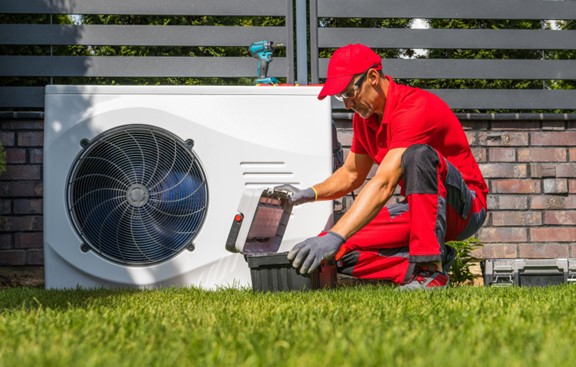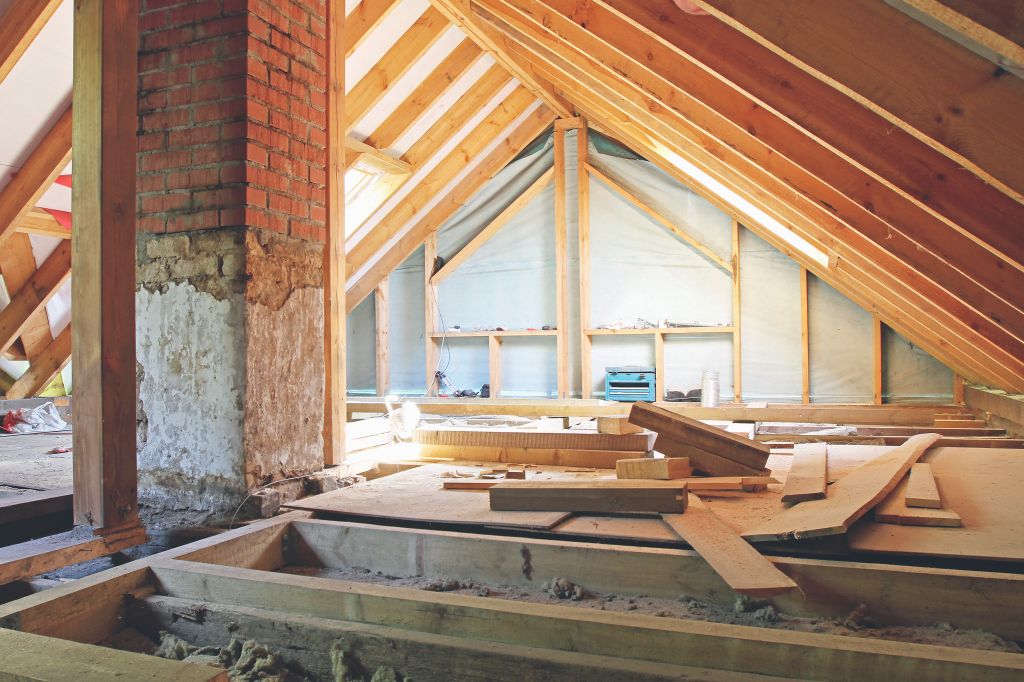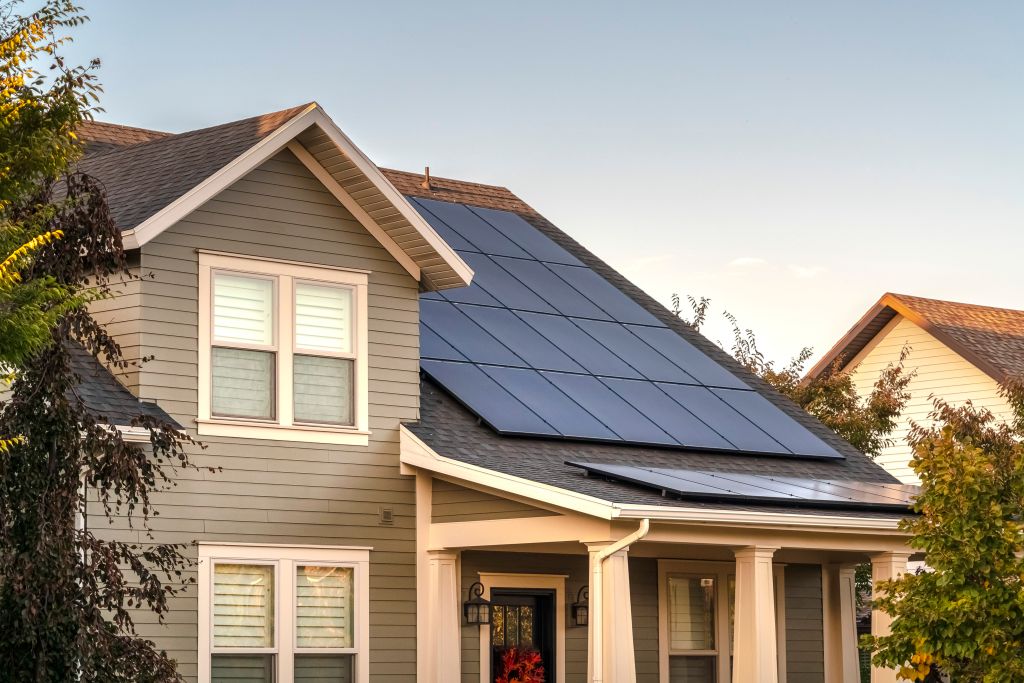Published March 14, 2024 • 8 Min Read
There are many reasons to consider adding a heat pump to your home. Heat pumps have the potential to lower your energy bills, improve energy efficiency, and reduce your home’s environmental impact. But it can be daunting to find one that suits your needs. From understanding the difference between upfront and lifetime costs to selecting the optimal heat pump technology that suits the size of your home, there are many factors to consider.
To decide whether you want to join the 840,000-plus Canadians who have already installed a heat pump to heat and cool their homes, it’s important to understand why it reduces greenhouse gas emissions, how the technology works, and the impact purchasing one can have on your wallet.
What are the environmental benefits of heat pumps?
Much of the energy used to keep homes comfortable comes from burning fossil fuels — like natural gas, oil, and propane to run furnaces and heating units — or by consuming electricity to power air conditioners. At the most basic level, heat pumps can be a better option for the environment because they are far more efficient than other heating and cooling options.
Powering heat pumps can produce significantly fewer greenhouse gas emissions because they use less energy; when heat pumps are powered by renewable energy sources like hydropower, wind, and solar, they produce no emissions at all.
A recent report analyzed the environmental and economic benefits if Canadians chose heat pumps over central air conditioning systems to cool their homes. The report found that the use of heat pumps could reduce emissions from home cooling by nearly 20 million tons by 2035 — and save $10.4 billion in energy bills.
Interest in heat pumps as a tool to help Canada achieve its goal of net-zero emissions by 2050 has intensified in recent years. The reason is simple. According to government statistics, 13 percent of national greenhouse gas emissions come from the energy consumed to heat, cool, and provide hot water to Canada’s 15 million residential and nearly 500,000 commercial buildings.
Heat pumps could help reduce the country’s annual household emissions by 24 million tonnes — the equivalent to removing six million gas-powered vehicles from the road each year, an amount that equals nearly all the cars in Quebec.
How do heat pumps work?
The emissions reductions and energy savings benefits of heat pumps are a result of their efficiency. To understand why heat pumps are so efficient, it helps to grasp the basics of how they work.
At the simplest level, heat pumps heat or cool a space by transferring existing heat from one place to another. They use a combination of compressors, fans, and refrigerants to heat or cool air and distribute it throughout a home.
All heat pumps utilize the same principle to achieve the same objective, but heat pump technologies include:
-
Air-source heat pumps are the most popular heat pump technology. They work by transferring heat from the outside(yes, heat exists outside of your home even when it’s very cold!) of a home inside to warm it up. In the summer, heat pumps move heat in the opposite direction, cooling a house by transferring hot indoor air to the outdoors.
-
Ground-source heat pumps operate in a similar fashion to air-source heat pumps, albeit with the important difference that they extract heat from the ground, rather than the air. Ground-source heat pumps are sometimes called geothermal or ground-coupled heat pumps and require sufficient outdoor space to bury the heat pump and pipes in the ground.
-
Water-source heat pumps take advantage of the comparatively stable temperature of water to heat and cool buildings. To heat a building, water-source heat pumps take water from a lake, pond, or well and extract heat from it via a heat exchanger, which is then used to warm a home. Cooling a home happens by removing heat from a building and transferring it to a water source. Only homes located near a lake, pond, well, or other body of water can take advantage of a water-source heat pump.
-
Cold climate heat pumps have emerged in recent years to address one of the weaknesses of traditional air-source heat pumps: Poor performance in cold temperatures. Technology advances have enabled heat pumps to provide reliable heating in extreme cold, including temperatures as low as -30° Celcius (-22° Fahrenheit).
How to choose the right heat pump for your home
There are many factors to consider when you’re deciding if a heat pump is right for your home — and, if the answer is yes, what size and type to purchase. Unlike a typical home appliance, selecting a heat pump means considering factors such as the climate you live in, the size of your home, whether it’s a replacement heating and cooling system, and the electricity rates in your area.
The first step towards improving your home’s energy-efficiency is to make sure your home is insulated properly. A well-insulated home prevents the air leakage that makes your house cold in the winter and hot in the summer. Having the right insulation means you can buy a smaller, and cheaper, heat pump.
Next, it’s important to choose the right size heat pump. A unit that’s too small may need more maintenance and repair because it will strain to meet your heating and cooling needs, while a too-large heat pump will use more energy than necessary.
Heat pump installers rely on industry guidance from a document called Manual J, which takes into account the square footage of your home, its layout, the number of windows and occupants, and other factors to properly size the heat pump. In some cases, a home may need more than one heat pump. Heat pump sizes are measured in British Thermal Units (BTUs). Generally, it takes 12,000 BTUs to heat and cool every 46 square meters (500 square feet) of a home.
A heat pump contractor or EnerGuide advisor will be able to help you choose the right size of heat pump. Find a contractor with experience installing heat pumps and to closely examination the warranties covering parts and equipment. Most heat pumps in Canada are covered by a one-year warranty for parts and labour and five years for the compressor, a key component for transferring heat. Air-source heat pumps should have a service life of 15 to 20 years if they receive annual maintenance — that’s about the same lifespan as an air conditioner and a furnace.
How much does a heat pump cost?
A recent report by researchers at the Canadian Climate Institute analyzed available residential heating and cooling options in five cities across the country (Vancouver, Edmonton, Toronto, Montreal, and Halifax), and determined that heat pumps offer the lowest lifetime cost for most households. And there are additional financial advantages, including reduced monthly energy bills.
The Canadian Climate Institute has an online calculator that allows homeowners to gauge the annual energy costs of heat pumps. Using an average of the five cities, the calculator estimates that a single home (you can also analyze costs for a townhome, apartment, or 20-unit building) built in 1980 would cost $1,600 per year to heat and cool with a standard heat pump with electric backup. By contrast, gas heating with air conditioning would cost just over $2,000 per year.
But one of the barriers to greater adoption of heat pumps is their relatively high upfront cost. There is a wide variation in the costs to install a heat pump. Larger systems to heat and cool big homes will naturally cost more than smaller heat pumps, and installations that also require duct work, additional insulation, and other energy efficiency measures can also add to the price tag.
Standard air-source heat pumps cost about $9,000 to install, including electric panel upgrades, an electric resistance coil for backup, and federal and provincial incentives. By comparison, it costs about $11,000 to install a gas furnace, ducted central air conditioner, and the necessary panel upgrade. Ground-source heat pumps tend to be more expensive, ranging between $15,000 and $30,000-plus. Besides its size, the price of a ground-source heat pump is also influenced by the system of pipes and coils underground that facilitate the transfer of heat. Cold climate heat pumps cost between $10,000 and $19,000.
Rebates and incentives to install a heat pump in Canada
Rebate programs are available to help homeowners cover the upfront costs of installation. Because heat pumps are seen as an effective tool to reach greenhouse gas reduction targets, government incentives are available to defray their upfront cost or make them more affordable over the long term.
The federal government’s Oil to Heat Pump Affordability program provides up to $10,000 (or $15,000 for homeowners in Nova Scotia, Newfoundland and Labrador, and Prince Edward Island) for the purchase and installation of cold climate air-source heat pumps that replace the use of oil for home heating.
The Canada Greener Homes Loan also provides interest-free loans of between $5,000 and $40,000 to finance retrofits recommended by an EnerGuide advisor, including the installation of a heat pump.
Some provinces and utility providers also offer financial incentives to make the installation of a heat pump more attractive. Learn more about available rebates in your province and heat pump financing options
This article is intended as general information only and is not to be relied upon as constituting legal, financial or other professional advice. A professional advisor should be consulted regarding your specific situation. Information presented is believed to be factual and up-to-date but we do not guarantee its accuracy and it should not be regarded as a complete analysis of the subjects discussed. All expressions of opinion reflect the judgment of the authors as of the date of publication and are subject to change. No endorsement of any third parties or their advice, opinions, information, products or services is expressly given or implied by Royal Bank of Canada or any of its affiliates.
Share This Article






